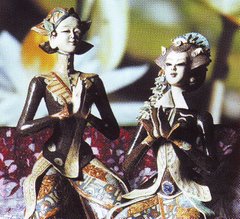
Introduction
Plantar fasciitis causes stabbing or burning pain that's usually worse in the morning because the fascia tightens (contracts) overnight. Once your foot limbers up, the pain of plantar fasciitis normally decreases, but it may return after long periods of standing or after getting up from a seated position.
Signs and symptoms

Plantar fasciitis usually develops gradually, but it can come on suddenly and be severe. And although it can affect both feet, it more often occurs in only one foot at a time. Watch for:
- Sharp pain in the inside part of the bottom of the heel, which may feel like a knife sticking in the bottom of foot
- Heel pain that tends to be worse with the first few steps after awakening, when climbing stairs or when standing on tiptoe
- Heel pain after long periods of standing or after getting up from a seated position
- Heel pain after, but not usually during, exercise
- Mild swelling in heel
Causes
Under normal circumstances, plantar fascia acts like a shock-absorbing bowstring, supporting the arch in the foot. But, if tension on that bowstring becomes too great, it can create small tears in the fascia. Repetitive stretching and tearing can cause the fascia to become irritated or inflamed. The causes of plantar fasciitis can be:
- Physical activity overload. Plantar fasciitis is common in long-distance runners. Jogging, walking or stair climbing also can place too much stress on your heel bone and the soft tissue attached to it, especially as part of an aggressive new training regimen. Even household exertion, such as moving furniture or large appliances, can trigger the pain.
- Arthritis. Some types of arthritis can cause inflammation in the tendons in the bottom of your foot, which may lead to plantar fasciitis.
- Diabetes. Although doctors don't know why, plantar fasciitis occurs more often in people with diabetes.
- Faulty foot mechanics. Being flat-footed, having a high arch or even having an abnormal pattern of walking can adversely affect the way weight is distributed when you're on your feet, putting added stress on the plantar fascia.
- Improper shoes. Shoes that are thin-soled, loose, or lack arch support or the ability to absorb shock don't protect your feet. If you regularly wear shoes with high heels, your Achilles tendon — which is attached to your heel — can contract and shorten, causing strain on the tissue around your heel.
Risk factors
Your risk of developing plantar fasciitis increases if you are:
- Active in sports. Activities that place a lot of stress on your heel bone and attached tissue are most likely to cause plantar fasciitis. This includes running, ballet dancing and aerobics.
- Flat-footed or have high arches. People with flatfeet may have poor shock absorption, which increases the stretch and strain on the plantar fascia. People with highly arched feet have tighter plantar tissue, which also leads to poor shock absorption.
- Middle-aged or older. Heel pain tends to be more common with aging as the arch of your foot begins to sag, putting stress on the plantar fascia.
- Overweight. Carrying around extra pounds can break down the fatty tissue under the heel bone and cause heel pain.
- Pregnant. The weight gain and swelling that accompany pregnancy can cause ligaments in your body — including your feet — to relax. This can lead to mechanical problems and inflammatory conditions.
- Being on your feet. People with occupations that require a lot of walking or standing on hard surfaces, including factory workers, teachers and waitresses, can damage their plantar fascia.
- Wearing shoes with poor arch support or stiff soles. A closet of poorly designed pumps, loafers and boots can mean plantar problems.
Complications
Ignoring plantar fasciitis may result in a chronic condition that hinders your regular activities. You may also develop foot, knee, hip or back problems because of the way plantar fasciitis changes your walking motion.
Treatment
If self-care techniques don't help, your doctor might suggest other treatments to heal your heel.
Conservative treatment
For most people, the condition improves within a year of beginning conservative treatment. Nonsurgical treatments that may promote healing include:
- Night splints. Your doctor may recommend wearing a splint fitted to your calf and foot while you sleep. This holds the plantar fascia and Achilles tendon in a lengthened position overnight so that they can be stretched more effectively.
- Orthotics. Your doctor may prescribe off-the-shelf or custom-fitted arch supports (orthotics) to help distribute pressure to your feet more evenly.
- Physical therapy. A physical therapist can instruct you in a series of exercises to stretch the plantar fascia and Achilles tendon and to strengthen lower leg muscles, which stabilize your ankle and heel. A therapist may also teach you to apply athletic taping to support the bottom of your foot.
Medications and procedures
If conservative treatment doesn't provide relief, you might consider:
- Corticosteroids. When other treatments don't work, your doctor may suggest one or two injections of corticosteroid medication into the region of the plantar fascia attachment at the heel for temporary relief. Multiple injections aren't recommended because they can weaken your plantar fascia and possibly cause it to rupture, as well as shrink the fat pad covering your heel bone. Another method for delivering corticosteroid medication is a technique known as iontophoresis (i-on-to-fuh-RE-sis), which uses gentle electric current to draw the medicine into the area of discomfort.
- Surgery. Only a small percentage of people need surgery to detach the plantar fascia from the heel bone (plantar fasciotomy). It's generally an option only when the pain is severe and all else fails. Side effects include a weakening of the arch in your foot.
Prevention
You can take some simple steps now to prevent painful steps later:
- Maintain a healthy weight. This minimizes the stress on your plantar fascia.
- Choose supportive shoes. Give stilettos the boot. Also avoid shoes with excessively low heels. Buy shoes with a low to moderate heel, good arch support and shock absorbency. Don't go barefoot, especially on hard surfaces.
- Don't wear worn-out athletic shoes. Replace your old athletic shoes before they stop supporting and cushioning your feet. If you're a runner, buy new shoes after about 400 miles of use.
- Start sports activities slowly. Warm up before starting any athletic activity or sport, and start a new exercise program slowly.
- Wake up with a stretch. Before you get out of bed in the morning, stretch your calf muscles, arch and Achilles tendon by reaching for your toes and gently flexing your foot. This helps reverse the tightening of the plantar fascia that occurs overnight.
Self-care

By following these self-care tips, you may be able to eliminate heel pain without further treatment:
- Apply ice. Hold a cloth-covered ice pack over the area of pain for 15 to 20 minutes three or four times a day or after activity. Or try ice massage. Freeze a water-filled paper cup and roll it over the site of discomfort for about five to seven minutes. Regular ice massage can help reduce pain and inflammation.
- Put your feet up. Stay off your feet for several days when the pain is severe.
- Decrease your miles. You probably won't have to permanently retire your running or walking shoes, but it's a good idea to cover shorter distances until pain subsides.
- Take up a no- or low-impact exercise. Swap swimming or bicycling for walking or jogging. You'll likely be able to return to your regular activities as heel pain gradually improves or disappears. However, some people find that the only way to avoid a recurring problem is to permanently modify their aerobic activities.
- Add arch supports to your shoes. Inexpensive over-the-counter arch supports take the tension off the plantar fascia and help absorb shock.
- Try acupressure techniques. Apply pressure to your heel by rolling a golf ball or tennis ball with the arch of your foot while you are standing and stabilized. This can help reduce pain and increase blood flow.
- Use over-the-counter pain medications. Acetaminophen (Tylenol, others), ibuprofen (Advil, Motrin IB, others), naproxen (Aleve) and others may ease pain and inflammation, although they won't treat the underlying problem. Use as directed, tapering off as your pain decreases.
- Stretch your arches. Simple exercises using household objects can stretch or strengthen your plantar fascia, Achilles tendon and calf muscles.













